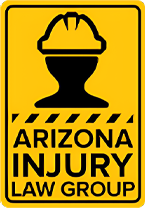|
|
Last Modified on May 02, 2024
We recently discussed on this blog the threat to worker safety posed by workplace violence. The news seems to report almost weekly on an incident in which a disgruntled employee used a firearm to retaliate against a former supervisor or colleagues. As tragic as these incidents are, though, they are only the most dramatic and high profile examples. Non-lethal physical assaults, which can also do serious harm, are far more common.
According to a 2015 report from the Henry J. Kaiser Family Foundation, Arizona employs approximately 216,000 people (or about one for every 33 residents) in health care. Most of these individuals are accustomed to the daily stress that comes with their profession, as well as the risk of back or neck injuries and exposure to infectious diseases and environmental hazards such as radiation.
In addition, threatened and actual violence against health care workers is a growing source of concern in Arizona and nationally. The Bureau of Labor Statistics’ Census of Fatal Occupational Injuries, reports that between 2011 and 2016 nearly 60 hospital workers were victims of fatal workplace violence.
AGITATED PATIENTS CONFRONTING STRESSED OUT PROVIDERS
Health care professionals recognize that patients and clients of medical and psychological treatment facilities are usually in some form of pain or distress. Patients and loved ones alike may be severely disoriented and agitated. Long waits in emergency departments can raise tempers to the boiling point. Thankfully, violent patients and family members remain in the minority. Nevertheless, nearly every veteran healthcare and social service worker has a story of having been bitten, kicked punched or otherwise physically assaulted in the workplace.
Verbal and even physical attacks by co-workers are also by no means unheard of. Many healthcare professionals report having had their lives or lives of family members threatened by co-workers. Because what begins as a verbal altercation can escalate to physical violence, every such confrontation needs to be taken seriously.
Between 2002 and 2013, the estimated rate of incidents of workplace violence in healthcare was more than four times the overall industry average. Additionally, most industry experts agree that the number of violent incidents is under-reported, particularly since a report may only be filed when the victim needs to take time off in order to recuperate.
While often as traumatic as physical attacks, instances of verbal abuse or harassment, especially by co-workers, are also likely to go unreported. This may be due to the absence of a clear and credible reporting policy or the victim’s fear of retaliation.
Such incidents may never be entirely avoidable, but the U.S. Department of Labor’s Occupational Health and Safety Administration (OSHA) does not accept that they are simply part of a day’s work. In 2016, OSHA published guidelines containing a number of recommended ways in which the risk can be reduced.
As evidence of its “get tough” attitude toward healthcare employers who fail to protect their workers from workplace violence, in April OSHA filed a citation seeking more than $70,000 in penalties from Premier Behavioral Health Solutions of Florida Inc. and UHS of Delaware Inc. The citation describes ways in which the companies failed over the course of several years to protect workers from violence. According to one report, another UHS subsidiary was cited in 2006 for similar failures.
THE CITATION DETAILS A NUMBER OF REQUIRED CORRECTIVE ACTIONS:
- Configuring workstations so as to place personnel and potential impromptu weapons such as staplers, telephone handsets and cords and sharp writing implements out of easy reach
- Development and dissemination of clear written procedures for how staff should respond to threatened or actual violence
- Regular training of staff in ways to protect themselves against threatened or actual assaults
- Adoption of enhanced intake screening procedures designed to more accurately identify potentially violent individuals
- Provision of readily accessible panic alarms
- Adoption and enforcement of a dress code that prohibits loose jewelry or other items such as lanyards that pose a strangulation risk
- Adoption and strict enforcement of a “zero tolerance” policy – that is, immediate termination – for any employee engaging in threats or violence against a co-worker
POTENTIAL FEDERAL ACTION
In March, H.R. 5223, the Health Care Workplace Violence Prevention Act, was introduced in the U.S. House of Representatives. If adopted, the legislation would direct OSHA to develop regulations requiring many healthcare employers to adopt a “comprehensive workplace violence prevention plan”.
The bill’s prospects are unclear. It was referred immediately following introduction to a subcommittee of the House Committee on Energy and Commerce. As of late May, no votes, hearings or other actions have been reported.





